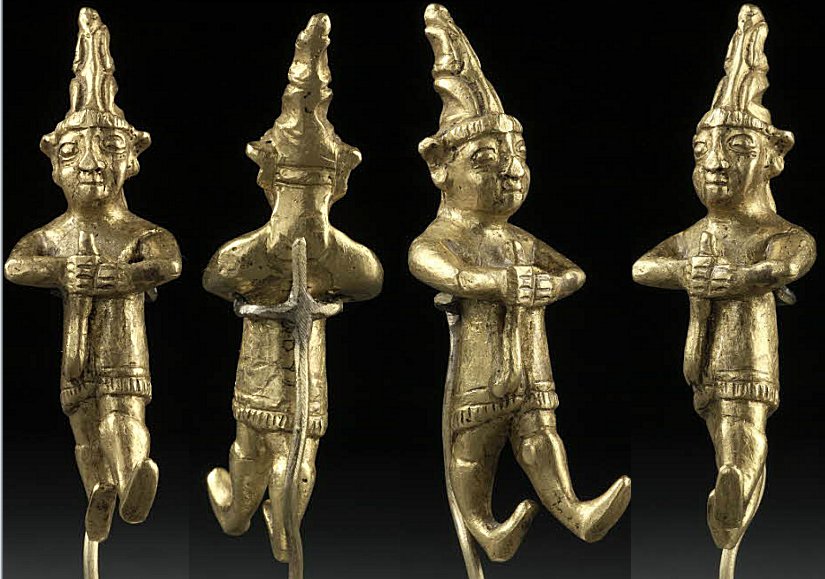Golden Figurine From Yozgat Depicts Unknown Hittite God
A. Sutherland - AncientPages.com - Hittites were one of the most important ancient civilizations of Asia Minor. They ruled the central Anatolian kingdom of Hatti from c. 1900 – 800 BC., and worshiped a number of gods and goddesses; they were described as the “civilization of 1,000 gods”.
As the conquerors of many lands, the Hittites found it useful to adopt the gods of other cultures into their own religious pantheon. Thus, the Hittite religion came to include gods worshiped by the Babylonians, Assyrians, Hurrians, and others, as well as the gods of the indigenous Hattian people of Anatolia.
The second reason for this massive number of gods is that most cities and towns in the Hittite empire had their own versions of similar deities. Thus, a single god could end up being turned into several different local deities with little difference between them other than the name.
Like many other ancient civilizations, the Hittites worshipped weather gods and the God of Storm. The preserved Hittite art consists primarily of reliefs, often architectural. There is also art in the smaller format, which developed during the Hittites' the Middle Kingdom that lasted from the 15th to 14th century and was a rather weak phase in the empire’s history.
During this period - largely unknown with very sparse surviving records - the art of Hittite diplomacy was developed.
This figurine from Yozgat is an example of this kind of art.
It is an amulet pendant (H. 3.80 cm; W. 1.30 cm; D. 1.30 cm), depicting the Hittite god from the time of the Hittite Empire. It was used by the ancient Hittites during the time when the Israelites were slaves in Egypt.
The figurine’s divinity is indicated by the short garment and the tall conical tiara; the sword in his hands additionally suggests that he is a warrior god, Teshub, the Hurrian god of sky and storm. Several myths about Teshub survive in Hittite versions.
Teshub is often depicted holding a triple thunderbolt and an axe (often double-headed) or mace.
In the religions of Asia Minor, the Hurrian weather god was assimilated by the Hittites to Tarhun, the central Hittite god related to the sky, weather, and thunder. According to a myth, one of Tarhun’s greatest achievements was the slaying of Illuyanka, a powerful dragon or serpent.
Written by – A. Sutherland AncientPages.com Staff Writer
Copyright © AncientPages.com All rights reserved. This material may not be published, broadcast, rewritten or redistributed in whole or part without the express written permission of AncientPages.com
Expand for referencesMore From Ancient Pages
-
 Why Did King Solomon Hide Advanced Technology In A Secret Place? – The Great Deception – Part 2
Ancient Mysteries | Apr 3, 2021
Why Did King Solomon Hide Advanced Technology In A Secret Place? – The Great Deception – Part 2
Ancient Mysteries | Apr 3, 2021 -
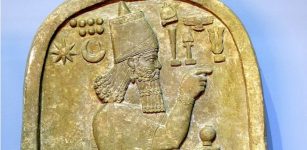 Stele Of Tell al-Rimah And Deeds Of Assyrian King Adad-nirari Against Rebellious Kings
Featured Stories | Feb 22, 2022
Stele Of Tell al-Rimah And Deeds Of Assyrian King Adad-nirari Against Rebellious Kings
Featured Stories | Feb 22, 2022 -
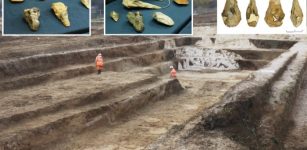 Rare Discovery: Giant Stone Artifacts Found On Ice Age Site In Kent
Archaeology | Jul 6, 2023
Rare Discovery: Giant Stone Artifacts Found On Ice Age Site In Kent
Archaeology | Jul 6, 2023 -
 Real-Life Excalibur Found Underwater In Bosnia – Medieval Sword In Stone Pulled Out
Archaeology | Oct 31, 2019
Real-Life Excalibur Found Underwater In Bosnia – Medieval Sword In Stone Pulled Out
Archaeology | Oct 31, 2019 -
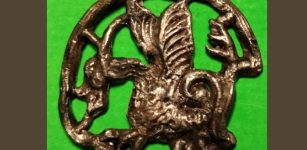 Medieval Pilgrim’s Badge (‘Pilgrim’s Sign’) Depicting A Basilisk Dragon In A Circle Discovered In Southeastern Poland
Artifacts | Mar 5, 2024
Medieval Pilgrim’s Badge (‘Pilgrim’s Sign’) Depicting A Basilisk Dragon In A Circle Discovered In Southeastern Poland
Artifacts | Mar 5, 2024 -
 Bacabs: Four Atlantean Gods Were Giants And Sons Of Itzámna, Maya God Of Heaven And The Sun
Civilizations | Jun 12, 2017
Bacabs: Four Atlantean Gods Were Giants And Sons Of Itzámna, Maya God Of Heaven And The Sun
Civilizations | Jun 12, 2017 -
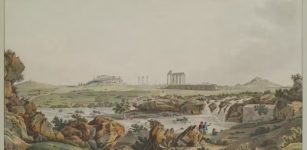 ‘The Waters Become Corrupt, The Air Infected’: Here’s How Ancient Greeks And Romans Grappled With Environmental Damage
Featured Stories | Nov 4, 2024
‘The Waters Become Corrupt, The Air Infected’: Here’s How Ancient Greeks And Romans Grappled With Environmental Damage
Featured Stories | Nov 4, 2024 -
 Ancient Jaintia Kingdom And The Garden Of Monoliths And Dolmens
Featured Stories | Nov 8, 2016
Ancient Jaintia Kingdom And The Garden Of Monoliths And Dolmens
Featured Stories | Nov 8, 2016 -
 Well-Preserved Neolithic Settlement Discovered Near Kutná Hora, Czech Republic
Archaeology | Aug 2, 2024
Well-Preserved Neolithic Settlement Discovered Near Kutná Hora, Czech Republic
Archaeology | Aug 2, 2024 -
 Roman-era mass grave with 60 bodies found in farmer’s field
Civilizations | Aug 27, 2015
Roman-era mass grave with 60 bodies found in farmer’s field
Civilizations | Aug 27, 2015 -
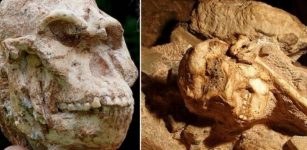 Skull Reveals Little Foot Was Capable Of Different Head Movements Than Modern Humans
Human Beginnings | Mar 25, 2020
Skull Reveals Little Foot Was Capable Of Different Head Movements Than Modern Humans
Human Beginnings | Mar 25, 2020 -
 Tragic Tale Of The Cursed House Of Atreus
Featured Stories | Apr 12, 2021
Tragic Tale Of The Cursed House Of Atreus
Featured Stories | Apr 12, 2021 -
 Ancient Stone Ram Figurine – Symbol Of Abundance And Great Courage – Unearthed In Old Cemetery
Archaeology | Oct 2, 2020
Ancient Stone Ram Figurine – Symbol Of Abundance And Great Courage – Unearthed In Old Cemetery
Archaeology | Oct 2, 2020 -
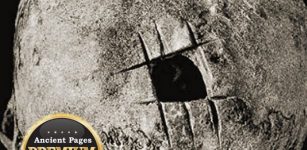 Prehistoric Surgery: Skull Operations Technically Superior To Our Own
Ancient Mysteries | Dec 24, 2014
Prehistoric Surgery: Skull Operations Technically Superior To Our Own
Ancient Mysteries | Dec 24, 2014 -
 A 2,500-Year-Old Planned City In Tarighat, Chhattisgarh, India
Civilizations | Oct 8, 2014
A 2,500-Year-Old Planned City In Tarighat, Chhattisgarh, India
Civilizations | Oct 8, 2014 -
 Scientific Disagreement Over The Bronze Age Tin Ingots From The Uluburun Shipwreck
Archaeology | Sep 25, 2023
Scientific Disagreement Over The Bronze Age Tin Ingots From The Uluburun Shipwreck
Archaeology | Sep 25, 2023 -
 Stunning Reconstructions Shows What Colchester Looked Like During Roman Times
News | Jul 2, 2022
Stunning Reconstructions Shows What Colchester Looked Like During Roman Times
News | Jul 2, 2022 -
 Controversy Of Cao Cao’s Tomb Continues – Did Archaeologists Unearth A Fake Tomb?
Civilizations | Oct 4, 2014
Controversy Of Cao Cao’s Tomb Continues – Did Archaeologists Unearth A Fake Tomb?
Civilizations | Oct 4, 2014 -
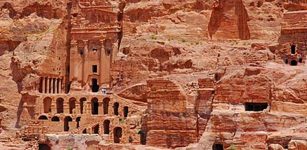 Skilled Nabataeans Celestially Aligned Petra’s Wonderful Architecture
Featured Stories | Mar 6, 2014
Skilled Nabataeans Celestially Aligned Petra’s Wonderful Architecture
Featured Stories | Mar 6, 2014 -
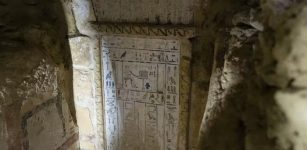 Archaeologists Have Discovered A Mummy Wrapped In Gold – Here’s What It Tells Us About Ancient Egyptian Beliefs
Featured Stories | Feb 7, 2023
Archaeologists Have Discovered A Mummy Wrapped In Gold – Here’s What It Tells Us About Ancient Egyptian Beliefs
Featured Stories | Feb 7, 2023

